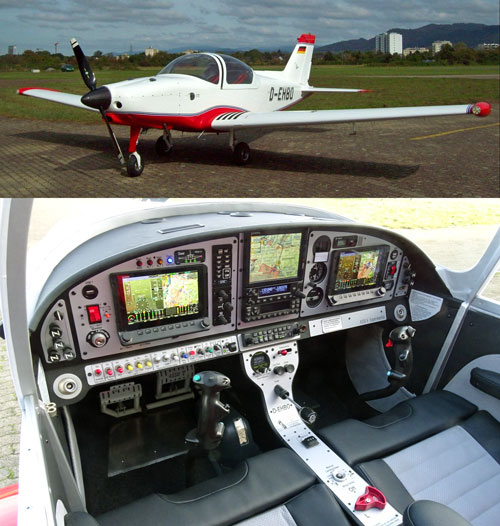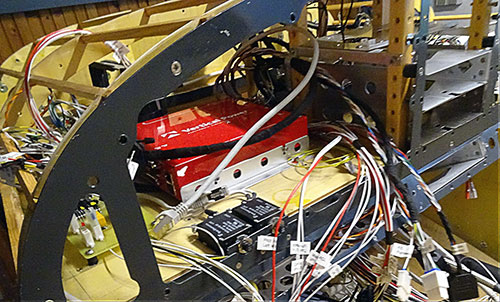Heirbert Orlik built this unique ASSO V experimental aircraft, incorporating the Vertical Power VP-X, from plans in Hohberg, Germany. He was generous in sharing his story with us for publication. Enjoy!
From Heribert Orlik:
"I started my homebuild project in 2009 with the purchase of 26 DIN A1 drawings. After a construction period of around 10 years, the successful maiden flight took place in the summer of 2020. Extensive flight testing took place in 2021 and 2022. The highlight was then the check flights by pilots from the Federal Aviation Authority (LBA). Everything went successfully. In December 2022, to my great delight, the aircraft was finally approved by the LBA.
With regard to the function and use of the VP-X system, I had to give the employees from the Federal Aviation Authority a lot of information about the VP-X system. The editors of the office had some reservations about fully electronic systems. But after familiarizing themselves with the subject, they accepted the VP-X system. This is certainly an advantage for further projects.
In general, I am very, very satisfied with my decision to use the VP-X. That was the right decision.

The aircraft is an ASSO V, built in a classic wooden construction as an experimental with retractable landing gear and a take-off weight of 750kg. All surfaces are paneled with plywood and covered with a thin layer of GRP. For the increased take-off weight, some parts of the aircraft had to be specially reinforced. In Germany - and according to my information also worldwide - an ASSO V with a MTOW of 750kg has never been registered. The aircraft is therefore a real one-off in terms of structure and equipment.
The aircraft is powered by a 100hp, Rotax 912ULS Engine. The two blade FP propeller is adjustable in flight.
The aircraft's electronics and avionics should be "state of the art" right from the start. All "classic" instruments and displays should be replaced by two identical electronic digital instruments (EFIS). This was also realized with the installation of two Dynon Skyview HDX 800. Only the three instruments of the emergency equipment are still mechanical devices. The EFIS are designed redundantly and each has its own emergency power supply.

I also wanted to take a more modern approach to wiring the electrical and electronic devices and units. No massive switches designed for high currents and no "battery" of fuses should be used. For this reason, I decided to use a system that offers the possibility of intelligently controlling and monitoring the electrical devices with electronic power controllers. When I visited AirVenture 2011 in Ohskosh and had very informative discussions with employees from Vertical Power, I decided to use the VP-X Pro system. The VP-X system provides protection, monitoring and switching for the connected electrical systems, trim and flap control, and a variety of other functions. The electrical systems are switched by "simple" switches that are connected to the VP-X with almost no current. The operating menu of the VP-X system is integrated in the EFIS. In this menu, the information of the connected systems such as switching states and power consumption are clearly displayed. Errors such as overcurrent or no current flow (e.g. defective lamp) are quickly recognized by the system and reported optically or acoustically.
In my opinion, the amount of wiring required to integrate the VP-X system into the aircraft is also significantly simpler than with conventional technology. A later modification is also much easier to implement due to the structure of the VP-X system. The use of the VP-X online system planner was very helpful for me when planning the aircraft electrics. With this tool, I was able to plan different variants during the construction phase and decide on a final structure. A really useful tool.
So far the system has completely convinced me. Thank you Vertical Power."
Heribert Orlik, EAA 862303, Hohberg, Germany
